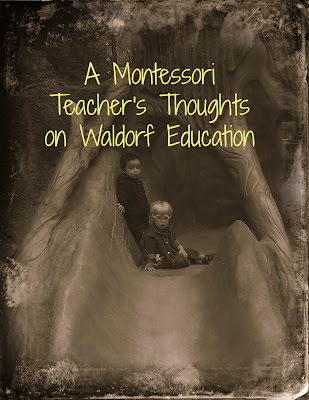One of the attributes I like about Waldorf is its sensitivity to the development of the WHOLE child: mind, body, and spirit. Also, there is a lot of emphasis on fine motor (like weaving, knitting, sewing), nature, cooking, playing, arts and crafts, large motor play, storytelling, poetry, songs, critical thinking, and literature.
Speaking of large motor, children really benefit from an emphasis on large motor movement activities, which aid in the function of right and left brain development: thus improving reading and writing skills between the ages of five and nine.
What I can say about childhood development is that not all professionals agree that children as young as four, five, and six should be doing academic work, that their right-brain and left-brain development is not completed, in fact, in some children, especially boys, it is delayed as compared to girls. And Waldorf takes this to heart--academic reading begins at age eight.
(Read this informative blog post on Waldorf and reading.)
In Montessori, there is a Sensitive Period for Reading at age five (Sensitive Period for Writing at age 4 1/2). But there is another sensitive period for reading at age eight. And Waldorf waits until the second sensitive period at age eight to start teaching children how to read. Up until that age, the language focus in Waldorf is on the SPOKEN word through storytelling, poetry, songs, and verse.
If you think your child would do better (and be happier) in a Waldorf-style environment, with arts, crafts, cooking, large motor, fine motor, songs, storytelling, and a lot less emphasis on academics until the later years... then Waldorf just might be the better choice.
~Lisa Nolan
Photo by Lisa Nolan

